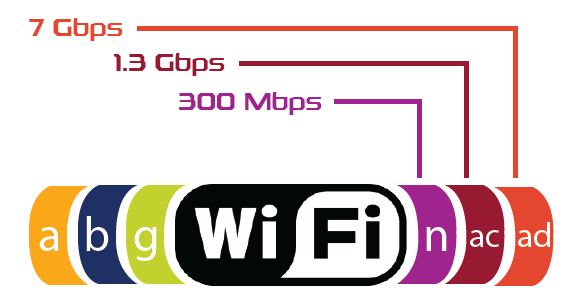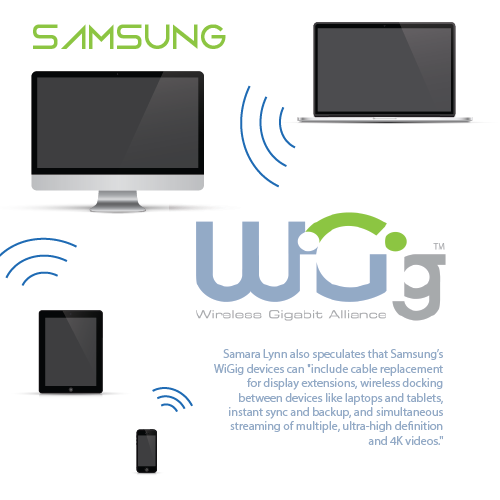With 212 billion devices expected to connect wirelessly by 2020, the race for cellular networks that support faster WiFi speeds such as 60 GHz continues.
The 802.11ac standard, approved this January, functions at 1.3 gigabits per second (Gbps) in laboratory environments- that’s three times the current bandwidth throughput than 802.11n APs. The 802.11ac also includes denser amplitude modulation, more spatial streams, beamforming to fortify RF (radio frequency) connections, and Multi-User MIMO (multi-input and multi-output).
But the 802.11ad standard, also known as WiGig, offers even faster speeds of up to 7Gbps using the unlicensed 60Ghz broadband spectrum. Unfortunately, the faster transmission rates yield a higher propagation loss because of its higher frequency. This translates into short-range functionality that does not threaten to make the 802.11ac standard obsolete, and the technology will work to complement 802.11ac connections. WiGig technology is also very sensitive to physical interference. A person can obstruct and disrupt an established connection forcing the receiving end device to rely on beams bounced off the wall to re-establish transmission. Physical obstacles such as an open-floor plans can create unreliable connections as well.
How Beamforming Strengthens WiGig Signals
The technology relies heavily upon adaptive beamforming to offer multi-gigabit wireless connectivity. Beamforming is a technique that strengthens Wi-Fi signals by focusing sensor arrays in a certain direction. Built to support tri-brand networking, WiGig will continue to operate at 2.4 Ghz and 5Ghz when devices cannot continue a 60 GHz transmission.
Samsung released a press release on October 14, 2014 announcing that it has cracked the obstacles preventing the commercializing of 60-GHZ Wi-Fi and reveals its plans to integrate the technology in audiovisual platforms, medical devices, and unsurprisingly, its IoT products that specifically coincide with its smart home product portfolio.
Technology Columnist Samara Lynn from PC Magazine, clarifies that Samsung’s press release indicates that it has optimized proprietary WiGig technology to create “islands” in homes that offer ultra-fast connectivity speeds ideal for short range audio and video streaming in home entertainments hubs.
Samsung indicates that it has “leveraged millimeter-wave circuit design and high-performance modem technologies, and developed a wide-coverage beamforming antenna that optimizes the communication module in less than 1/3000th of a second when there’s any change in the communications environment”. This proprietary technology builds upon WiGig specifications drawn by the Wi-Fi Alliance and suggests improvements that reduce the impact of nearby obstructions.
Samara Lynn also speculates that Samsung’s WiGig devices can “include cable replacement for display extensions, wireless docking between devices like laptops and tablets, instant sync and backup, and simultaneous streaming of multiple, ultra-high definition and 4K videos.” Therefore, WiGig technology will enrich home-entertainment hot-spots connected to the internet such as game consoles, smart Tv’s, and desktops.
How long do you think it will take for mainstream users to adopt 802.11ad technology?
Questions? Hesitations? We want to share our networking expertise with you. Click on the offer below and ask us anything!




